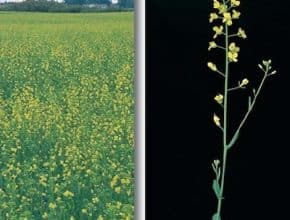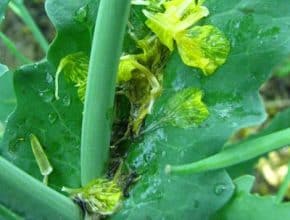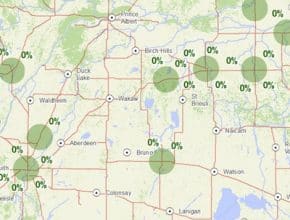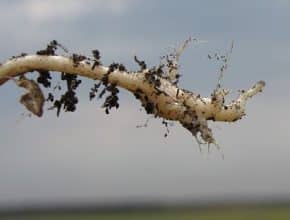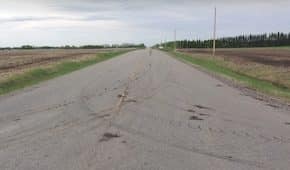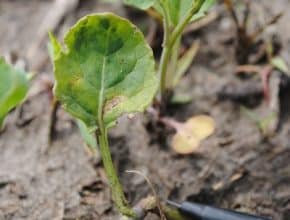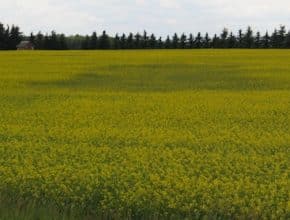1. Flowering percentage to determine timing for fungicide. The photo above from NDSU shows canola at 20% flower, which is when the application window opens. To assess flowering progress, concentrate on the main stem only. Count all flowers, including aborted flowers and developing pods. With 15 flowers main stem, the field is around 20% flower. Read the other nine…
Diseases
-
-
-
Scientists at Agriculture and Agri-Food Canada are testing an early warning system for sclerotinia in canola. The project is in its first year and involves 35 volunteers in Saskatchewan monitoring the emergence of apothecia in 67 sclerotia depots across the province. Each depot consists of 50 sclerotia (fungal resting bodies) buried at the soil surface. Sclerotia in the depots are…
-
Want to see how a foliar nutrient application helps a hailed crop? Leave a check strip. Want to see whether a novel treatment provided a return on investment? Leave a check strip. Growers can use strip trials on their own farms to test how a particular practice or product performs in a local environment. This information can then be used…
-
Research has confirmed the presence of a different clubroot pathotype in the Edmonton region and none of the commercially available clubroot resistant varieties in Western Canada are effective at managing it. Stephen Strelkov, the University of Alberta researcher leading this project, has identified other resistance genes that could work, but they are not currently in commercial hybrids…
-
A moist late spring means more mud clinging to equipment and, because growers are under extra pressure to get the crop seeded, less time available to clean equipment between fields. This greatly increases the risk of clubroot spreading from field to field. The following photos show high risk scenarios for clubroot spread…
-
-
Moist seed conditions mean more soil clinging to drills and tractor and sprayer wheels. This increases the risk of moving clubroot as well as weed seeds and insect pupae around the farm. With the discovery of a potential new clubroot pathotype, growers will want to take time to sanitize equipment between fields…
-
New data from the Alberta clubroot disease survey indicates some forms of clubroot resistance are no longer functioning well against a possible new clubroot pathotype in the Edmonton region. Dr. Stephen Strelkov at the University of Alberta has investigated samples collected from several fields and verified higher levels of infection than expected in some clubroot resistant varieties. Further studies are…
